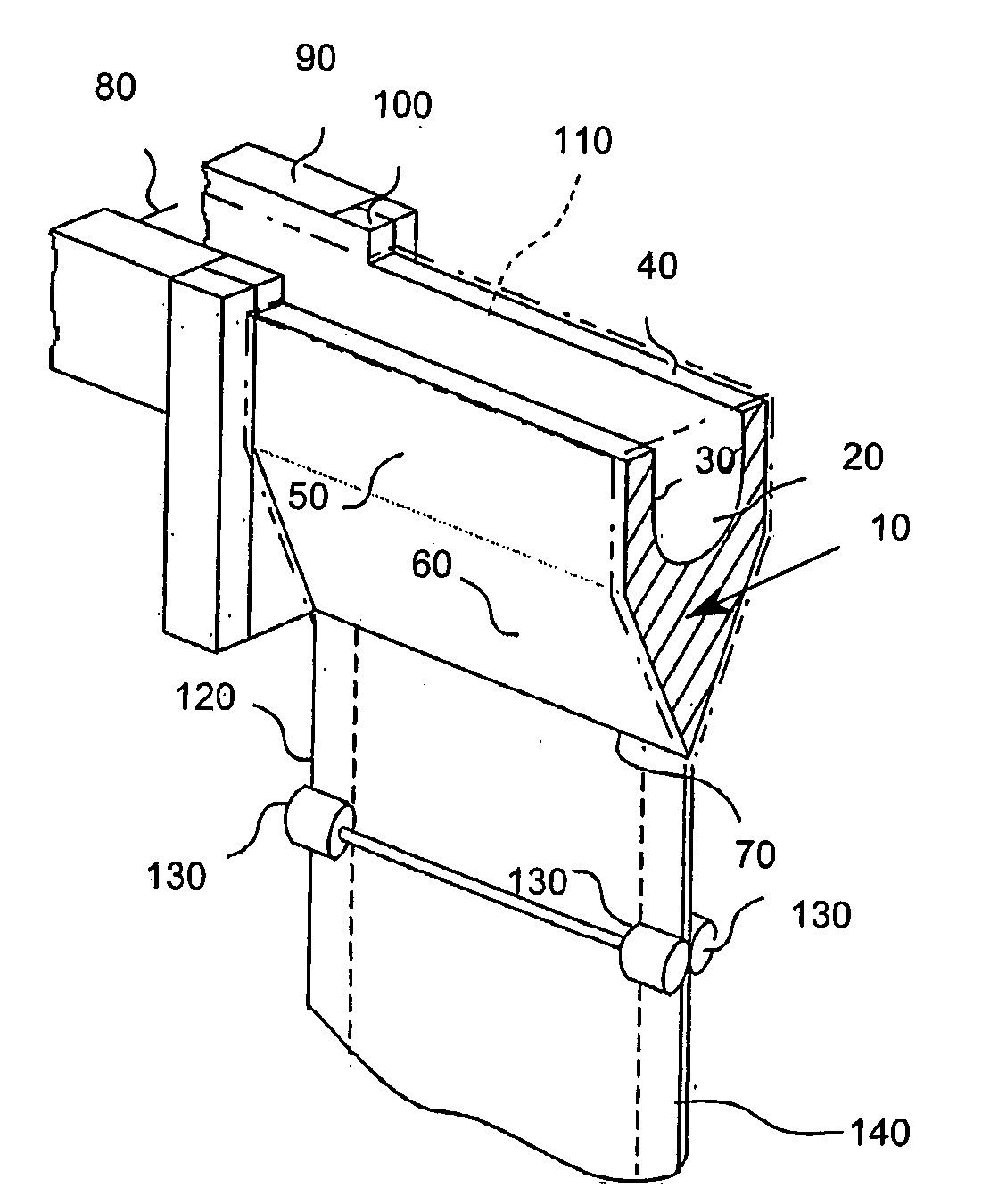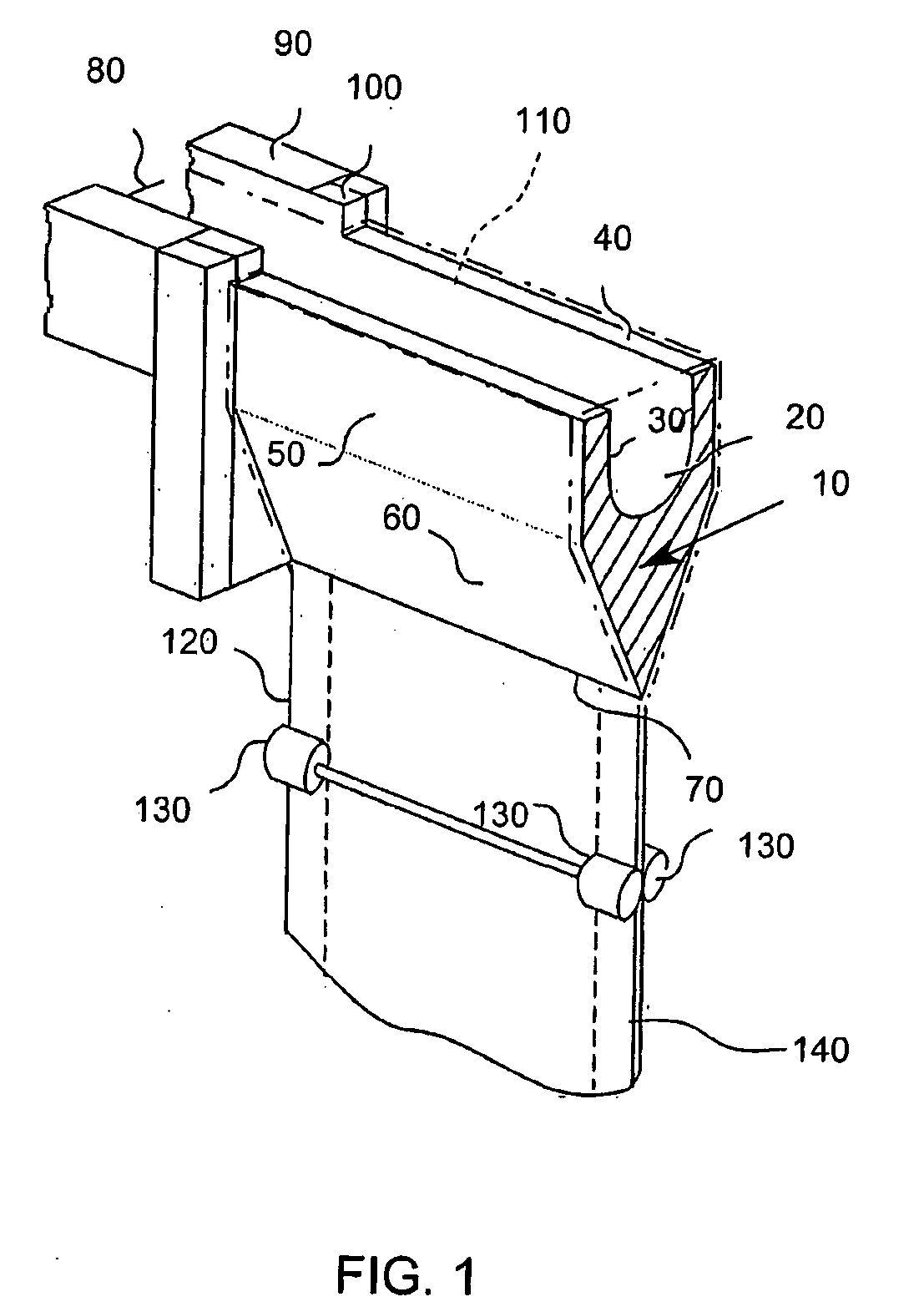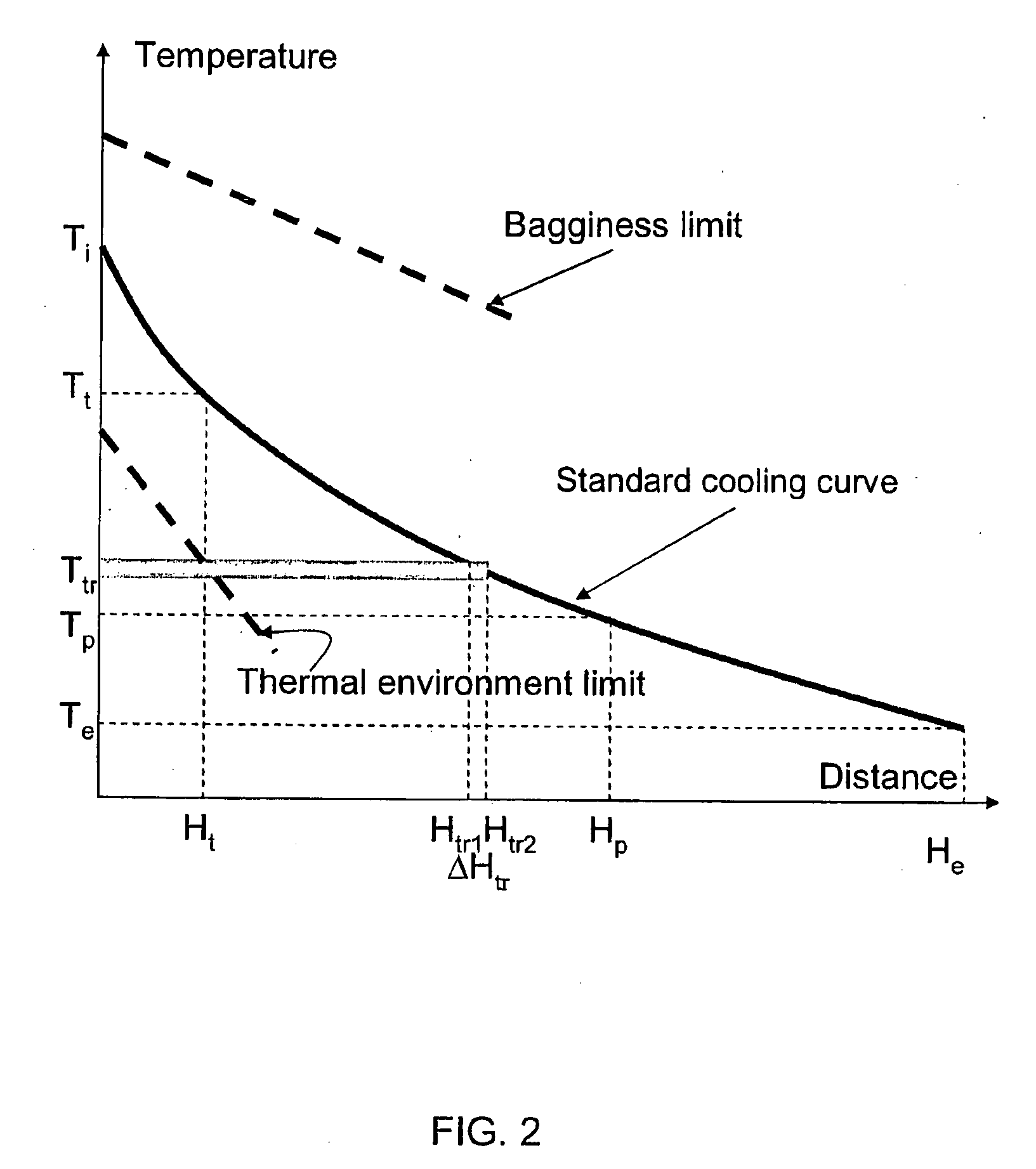Method of making a glass sheet using controlled cooling
a technology of controlled cooling and glass sheets, applied in glass rolling apparatus, glass tempering apparatus, manufacturing tools, etc., can solve the problems of glass deformation, major challenge to the use of glass substrates, loss of proper registration, etc., to increase the initial cooling increase the rate of glass sheets, and increase the flow of molten glass
- Summary
- Abstract
- Description
- Claims
- Application Information
AI Technical Summary
Benefits of technology
Problems solved by technology
Method used
Image
Examples
case b
[0126]Start from a lower viscosity (50,000 vs. 130,000 poises) while maintaining a constant spatial temperature profile and flow rate;
case c
[0127]Start from a lower viscosity (50,000 vs. 130,000 poises) at the same flow rate as in case B, and modifying the temperature profile to maintain a given pulling force. In this case a 750° C. temperature 1 m below the root was maintained constant;
case d
[0128]Start from a lower viscosity (50,000 vs. 130,000 poises) while maintaining a constant spatial temperature profile, and modifying the flow rate to maintain a given pulling force.
[0129]The results of the above analysis are summarized numerically in the table provided in FIG. 10 and graphically in FIGS. 11-12. As indicated in FIG. 10, decreasing the viscosity from approximately 130,000 as given in the standard Case A to about 50,000 poise in Case B while maintaining essentially the same cooling curve as in the standard case (Case A) results in a decrease in pulling force from 50 N / m to 3.5 N / m, and a very significant increase in the gravity contribution, from 47% to 91%. Thus, the glass sheet formed in accordance with case B is formed with a close to 0 pulling force and may prove unacceptable from a glass quality perspective. That is, the pulling force decrease combined with an increase in the gravity contribution to the pulling force may result in so-called baggy warp of the gla...
PUM
| Property | Measurement | Unit |
|---|---|---|
| Temperature | aaaaa | aaaaa |
| Fraction | aaaaa | aaaaa |
| Fraction | aaaaa | aaaaa |
Abstract
Description
Claims
Application Information
 Login to View More
Login to View More - R&D
- Intellectual Property
- Life Sciences
- Materials
- Tech Scout
- Unparalleled Data Quality
- Higher Quality Content
- 60% Fewer Hallucinations
Browse by: Latest US Patents, China's latest patents, Technical Efficacy Thesaurus, Application Domain, Technology Topic, Popular Technical Reports.
© 2025 PatSnap. All rights reserved.Legal|Privacy policy|Modern Slavery Act Transparency Statement|Sitemap|About US| Contact US: help@patsnap.com



